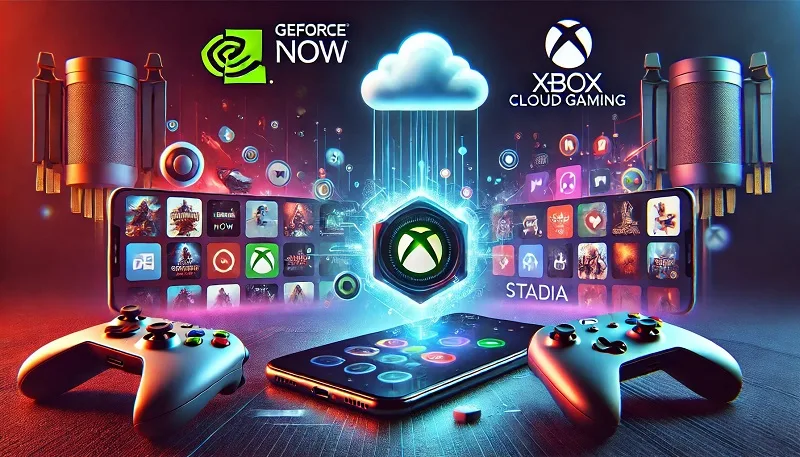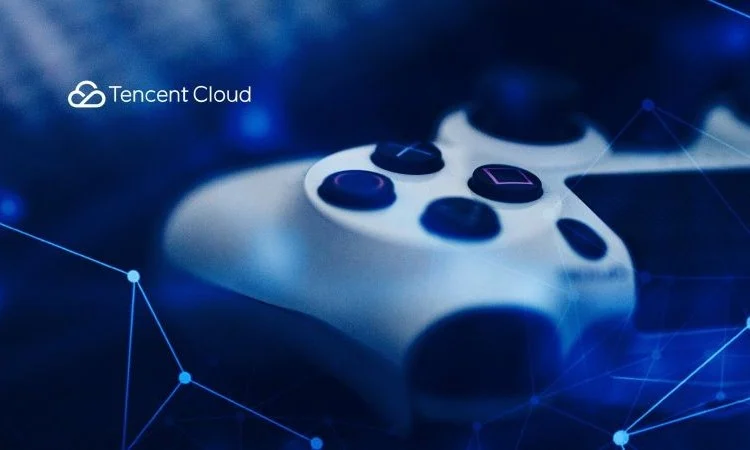Introduction
Cloud gaming is a new way to play video games that doesn’t require a console like PlayStation, Xbox, or a high-end gaming PC. Instead, games are run on powerful computers (called servers) in remote data centers. These servers then send the game video to your device—whether it’s a smartphone, tablet, or computer—while you send back your actions through the internet. It’s similar to streaming a movie or a show, but with interactive gameplay!

How Does Cloud Gaming Work?
In traditional gaming, the game runs directly on your device. You need a console or PC with enough power to play high-quality games. But in cloud gaming, everything happens online. Here’s how it works:
- Cloud Servers: Game data is stored and processed on powerful servers.
- Streaming: The server sends the video and audio of the game to your device.
- Inputs: You control the game using a controller or keyboard, and your inputs are sent back to the cloud in real-time.
The beauty of this system is that you don’t need to worry about hardware specs, as the heavy lifting is done by the cloud server. All you need is a strong internet connection.

Why Is Cloud Gaming So Popular?
Cloud gaming has become popular for a number of reasons, including:
-
No Need for Expensive Hardware: With cloud gaming, you don’t need to buy a PlayStation, Xbox, or a super-expensive gaming PC. You can play the latest games on devices you already own, like your smartphone, tablet, or even your smart TV.
-
Access Anywhere: As long as you have a stable internet connection, you can play anywhere. Whether you're on the go, traveling, or sitting on your couch, you can stream games without worrying about physical consoles.
-
Instant Access to Games: Many cloud gaming services let you play games instantly, without needing to download or install them. Just pick a game, press play, and you’re ready to go.
Cross-Platform Play: With cloud gaming, you can play the same game across different devices. For example, you can start playing a game on your PC, continue on your phone, and finish it on your smart TV. It’s seamless!

Major Cloud Gaming Services
Several companies are leading the way in cloud gaming. Here are a few of the most popular ones:
-
Xbox Cloud Gaming (formerly xCloud): Offered by Microsoft, Xbox Cloud Gaming allows players to stream games from Xbox Game Pass Ultimate. It’s one of the largest cloud gaming services and offers a wide variety of games, from the latest releases to older classics.
-
NVIDIA GeForce Now: NVIDIA’s cloud gaming service allows users to play games they already own on platforms like Steam, Epic Games Store, and more. It supports high-quality graphics and is known for its low latency.
-
Google Stadia: Although it faced challenges and was shut down in 2023, Google Stadia was one of the earliest and most well-known cloud gaming services. It provided a platform for players to purchase games and play them directly through a browser, without any hardware.
-
Amazon Luna: Amazon’s cloud gaming service offers a subscription model where players can access different channels, like Ubisoft+ and other game libraries. It’s available on devices like Fire TV, computers, and more.
PlayStation Plus Premium: Sony also offers cloud gaming through its PlayStation Plus Premium tier. It allows users to play a variety of PS3, PS4, and PS5 games via streaming, which can be a great option for PlayStation fans.
Benefits of Cloud Gaming
Cloud gaming offers several advantages for gamers:
-
No Need for Expensive Hardware: As mentioned earlier, one of the main benefits of cloud gaming is that you don’t need to spend money on high-end gaming consoles or PCs. All you need is an internet connection and a device to play on.
-
Instant Play: Traditional gaming usually requires you to wait for downloads or installations. With cloud gaming, you can jump into a game immediately. It’s as simple as hitting "play" and starting the game.
-
Access to a Large Library of Games: Many cloud gaming services offer a large selection of games. With a subscription, you get access to numerous titles without needing to buy them individually.
-
Cross-Device Play: Since the games are stored and run on the cloud, you can play the same game on multiple devices. For example, you could start a game on your phone while commuting, then continue on your tablet at home.
No More Console Upgrades: Normally, every few years, you’d need to upgrade your console or gaming PC to keep up with the latest games. With cloud gaming, that’s not necessary. The servers are always updated with the latest technology.

Challenges in Cloud Gaming
Despite its many advantages, cloud gaming still faces a few challenges that need to be addressed:
-
Latency Issues: Since cloud gaming relies on the internet to send and receive data, there can sometimes be a delay between your actions and what happens on the screen. This is called latency. It’s especially problematic in fast-paced games like first-person shooters or racing games.
-
Internet Speed Requirements: To stream games at high quality, you need a fast and stable internet connection. In areas with poor internet infrastructure, this can be a barrier to entry.
-
Game Availability: Not all games are available on cloud gaming services. Some game developers prefer to keep their titles exclusive to consoles or PC, limiting the options for cloud gaming users.
Data Usage: Streaming high-quality games can use up a lot of data. If you have a limited data plan, this could become a concern, especially if you game frequently.

The Future of Cloud Gaming
The future of cloud gaming looks promising. As technology improves, many of the challenges facing cloud gaming are likely to be addressed. For example:
-
Faster Internet: With the rollout of 5G networks and fiber-optic internet, download speeds and latency will improve, making cloud gaming smoother and more reliable.
-
Better Graphics and Performance: As cloud servers continue to improve, the games you play via the cloud will look better and run more smoothly. We can expect more advanced games to become available, pushing the boundaries of what’s possible in cloud gaming.
-
More Game Libraries: As more companies jump into the cloud gaming space, the variety and number of games available are likely to increase. This will help attract more players to cloud gaming.
-
Wider Adoption: As internet speeds and cloud gaming technology improve, more gamers will adopt cloud gaming, making it a mainstream method of play for a wider audience.
Conclusion: Is Cloud Gaming the Future of Gaming?
Cloud gaming is a technology that’s changing the way we think about video games. It’s removing the need for expensive hardware, giving players access to a huge library of games, and enabling them to play on almost any device. While there are still challenges to overcome, such as latency and internet speed requirements, the future of cloud gaming looks bright. With ongoing improvements in technology, cloud gaming could become the dominant way people play games in the future, offering a more accessible and flexible gaming experience for everyone.


You must be logged in to post a comment.